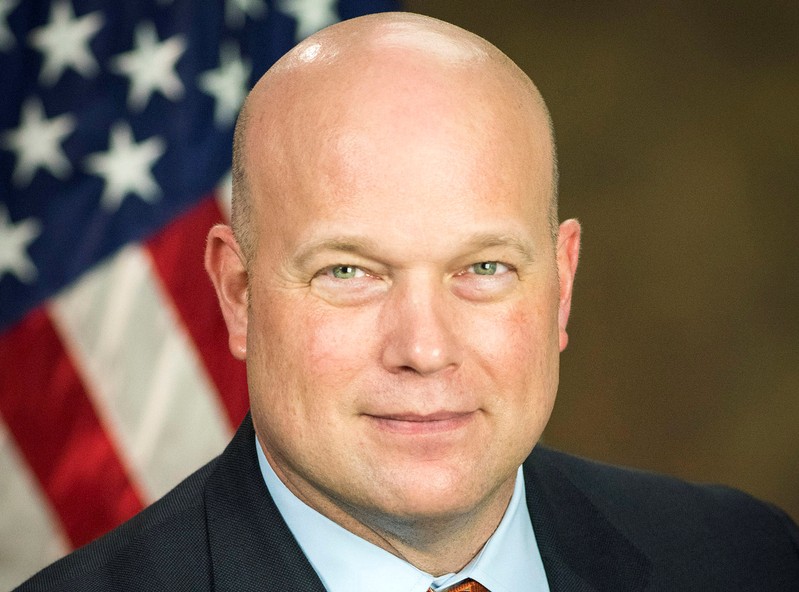
U.S. Vice President Mike Pence is expected to lay out details of Washington’s free and open Indo-Pacific vision during his Asia tour this week. He will be representing President Donald Trump at the U.S.-ASEAN Summit and Asia Pacific Economic Cooperation forum, visiting Australia, Japan, Papua New Guinea and Singapore.
“We seek an Indo-Pacific — from the United States to India, from Japan to Australia, and everywhere in between — where sovereignty is respected, where commerce flows unhindered and where independent nations are masters of their own destinies,” Pence wrote in a Washington Post commentary ahead of his visit.
He reiterated: “Authoritarianism and aggression have no place in the Indo-Pacific region” — a possible reference to China which has been flexing its military and economic might in the region.
But even before the U.S. began calling for a free and open Indo-Pacific, both Japan and Indonesia already introduced their own policy ideas for the region.
Jakarta was the first to push for an Indo-Pacific policy, followed by Tokyo and then Washington. All of them refer to the same geography — the triangular area between the Pacific and Indian Oceans, bordered by Japan, India and Australia.
But Indonesia, which lies within that triangle, has a vision doesn’t seem to harmonize with the proposals of Japan and the United States, which are both associated with containing China.
Indonesia’s model, announced by former Foreign Minister Marty Natalegwa in 2013, is based on regional cooperation. It was developed as a means for the Association of Southeast Asian Nations to maintain its unity.
Natalegwa said the initiative was open to all countries that participated in the 2011 East Asia Summit, which includes China and Russia. President Joko Widodo’s government has echoed that all-embracing approach, with Foreign Minister Retno Marsudi describing the program as inclusive and comprehensive.
Indonesia wants an independent foreign policy and prefers to remain neutral when it comes to rivalry between major powers, researchers at the ISEAS–Yusof Ishak Institute, a Singapore think tank, wrote in a recent note.
Marsudi intends to bring up her country’s Indo-Pacific blueprint at the 13th East Asian Summit later this month, but it will be difficult for participating nations to accept the neutral and inclusive concept, the note continued.
That’s because the U.S. and Japan are pushing to counterbalance Beijing’s diplomatic, economic and military reach through their own schemes.
“It will take much effort by Indonesia to resist the push towards a counter-China, liberal Indo-Pacific,” according to a note published by the Australian Strategic Policy Institute last week. The Indo-Pacific idea “may already be too deeply entangled with U.S.-led strategic maneuvering,” wrote the note’s authors.
Like Indonesia, India has stressed a broad view of the Indo-Pacific. Speaking in Singapore earlier this year, Indian Prime Minister Narendra Modi said that the term Indo-Pacific included all nations in the geography as well as others with stakes in the area.
Japan’s Free and Open Indo-Pacific (FOIP) strategy was first announced by Prime Minister Shinzo Abe in 2016, and is rooted in economic and maritime security. Despite Tokyo’s assertions to the contrary, it’s widely seen as a response to China’s Belt and Road Initiative, a continent-spanning venture aimed at expanding the Communist Party’s global influence.
For years, Tokyo has provided development assistance for infrastructure and human resources across Southeast Asia, encouraging Japanese firms to channel foreign direct investment towards ASEAN.
With nearly the entire region now a part of the Belt and Road plan, Japan and China have been vying for influence in countries such as Cambodia. Most recently, Abe’s administration announced plans tions to expand investments in the Pacific islands, where Chinese President Xi Jinping’s administration has spent billions in aid.
Abe has also repeatedly stressed the need for maintaining a rules-based order in regional waters, especially the South China Sea and East China Sea, where Beijing’s assertive behavior has worried many. China claims almost all of the South China Sea as its own territory.
The White House’s own FOIP concept, which relies on India playing an important role, is also viewed through the lens of strategic competition with China.
First brought to light by former U.S. Secretary of State Rex Tillerson in late 2017, the plan is centered on freedom of navigation in Pacific waters — a direct challenge to Beijing’s vast territorial grabs in the South China Sea. U.S. infrastructure spending on Southeast Asian technology, energy and infrastructure, viewed as an alternative to the Belt and Road, is also a major element of the strategy.
“While the Indo-Pacific perspective as proposed by [Indonesia] has not been taken up by any country, Shinzo Abe’s FOIP has on the other hand, been adopted by Trump’s administration,” said the note by ISEAS–Yusof Ishak Institute.
It remains to be seen which model is best suited for Asia.
Though Southeast Asian nations share many of the concerns that the U.S. and Japan have about Beijing, “ASEAN has always been inclusive (and) uncomfortable with security alliances,” said the Australian Strategic Policy Institute.
—Correction: This report has been updated to accurately reflect the spelling of the former Indonesian foreign minister’s name.

